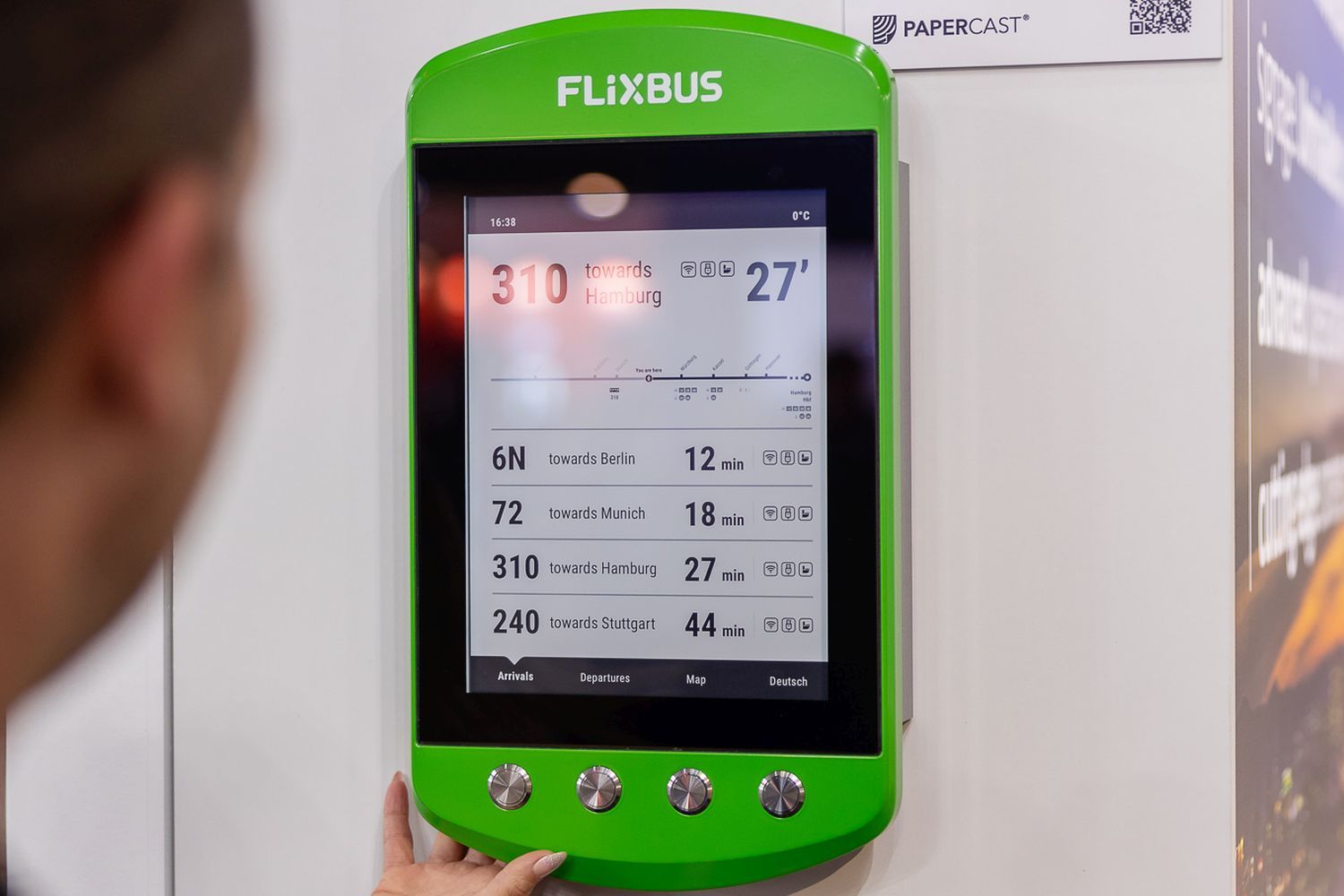The hot technologies making their mark in digital signage

One of the most interesting upcoming technologies in the digital signage industry is e-paper displays. These have the huge advantage of drawing zero power when displaying static content, making them very attractive to those looking for more sustainable signage solutions. They are also readable in direct sunlight.
The technology has evolved from small electronic retail shelf labels, and is now opening up a new market for digital signage as an alternative to printed signs for information displays in a wide variety of environments. E-paper now offers good colour depth (and a choice of 60,000 colours) and display size of 30” or more. However, e-paper can’t handle rapidly changing imagery and video, so it’s not a competitor with LCD and LED.

Another significant development is the growth of remote device management. Particularly as digital signage networks grow in size, the ability to manage them centrally becomes increasingly important. Fixing issues without resorting to callouts saves time and money, and the ability of systems to ‘self-heal’ increases uptime – which is especially important in business-critical digital signage applications. Additionally, being able to control the energy consumption of displays – by adjusting brightness to ambient light levels, and switching them off completely when not in use – has significant sustainability benefits, including increased service life.
Remote device management systems have five key areas of functionality: remote view, control, execution, diagnostics and reporting. Large digital signage integrators enjoy economies of scale by managing multiple customers’ systems from a network operations centre.
Finally, we shouldn’t overlook artificial intelligence as a major technology trend. AI has been a part of digital signage for some time in the form of facial recognition algorithms – used in DooH applications to target messaging to the age and gender of the viewer and, more controversially, to identify individuals in law-enforcement settings. More sophisticated functionality includes gauging the mood of the viewer.
It’s not yet clear where the latest generation of generative AI applications will make the biggest impression in the digital signage market. One likely area is in the real-time adaptation of content in the quest for ever-greater personalisation of messages.

)
)
)
)
)
)
)
)
)

)
)
)
)
)
)
)
)
)
)
)
)
)
)
)
)
)
)

)
)
)
)
)
)
)

)
)
)
)
)
)
)
)
)
)
)

)
)
)
)
)
)
)
)
)
)
)
)
)
)
)
)
)
)
)
)
)